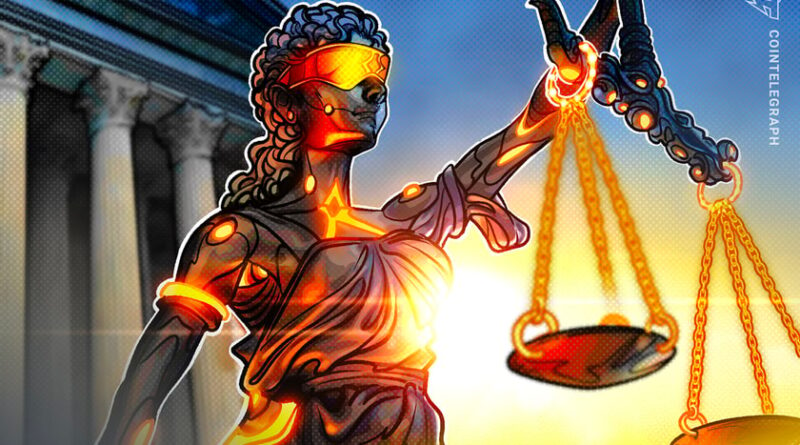How can legal chatbots enhance access to justice?
Legal chatbots can enhance access to justice by providing affordable and easy-to-access legal assistance to those who cannot afford traditional legal services.
What is the future of legal chatbots?
Legal chatbots are expected to become more advanced with the rise of AI, allowing them to provide more personalized and accurate legal advice in the future.
Legal chatbots have a promising future, especially with the development of AI. Chatbots will advance in sophistication as AI improves, offering more individualized legal advice and counseling. Additionally, AI-powered chatbots might offer a more human-like experience, enabling consumers to communicate with them more quickly and intuitively. Chatbots can analyze and comprehend legal questions more accurately and efficiently by using NLP and machine learning, which enables them to give more accurate answers.
Legal chatbots might be a key instrument in the legal sector in the future if they help increase access to justice. Chatbots may be able to answer more complicated legal questions and offer more in-depth legal guidance as technology advances. They might also become more broadly accessible, making legal counsel accessible to people from all walks of life without paying expensive fees.
It is crucial to address the restrictions and moral dilemmas related to their use to ensure that legal chatbots are used responsibly. This will require continual research, development and regulation. Ultimately, it seems that legal chatbots have a bright future and the potential to revolutionize the way people access legal advice and services.
What are the limitations of legal chatbots?
Legal chatbots have various limitations, including a restricted scope, lack of personalization, language restrictions, technological problems, and ethical concerns that may impact the precision and dependability of the legal advice given.
While legal chatbots can be helpful tools for increasing access to justice, they should not be seen as a replacement for human lawyers or legal advice tailored to the specific needs of the individual. Here are some limitations of legal chatbots:
- Restricted scope: Based on pre-set algorithms, legal chatbots are trained to respond to particular legal queries and offer legal advice. As a result, they might not be able to provide thorough legal counsel in complicated situations that require human experience.
- Lack of personalization: Legal chatbots are created to offer general legal advice rather than considering a user’s particular legal situation. As a result, the advice provided by chatbots might not be personalized for the user.
- Language restrictions: Because legal chatbots are designed to work only in a few languages, users who speak other languages may find them less valuable.
- Technological problems: Legal chatbots are susceptible to technical hiccups and errors like any other technology. This might impact the precision and dependability of the legal advice given.
- Ethical concerns: Legal chatbots could create moral issues involving the unlicensed practice of law, confidentiality and conflicts of interest. Users run the risk of relying too much on chatbots for legal counsel, which could have negative legal and financial repercussions.
What are the benefits of using legal chatbots?
Legal chatbots have the potential to enhance access to justice by providing affordable, efficient and accessible legal services to the public.
Legal chatbots offer several benefits to both legal professionals and the public, including:
- 24/7 availability: Legal chatbots can operate around the clock, which means users can access legal advice and information anytime they need it without worrying about business hours or holidays.
- Cost-effective: Chatbots can increase access to legal services for those who cannot afford traditional legal services because they are less expensive than human attorneys and law firms.
- Efficiency: Chatbots can provide quick, automated solutions to frequently requested inquiries, which can help users and legal professionals save time.
- Consistency: Because chatbots are programmed to adhere to predetermined norms and procedures, they can deliver consistent and accurate information. This can aid in avoiding mistakes and inconsistencies in legal advice.
- Privacy: Customers may feel more at ease speaking with a chatbot than a real lawyer about delicate legal issues, which can improve privacy and confidentiality.
- Accessibility: Legal chatbots can deliver information and guidance in various languages and formats, making legal services more accessible to people with different requirements and backgrounds.
- Scalability: Chatbots are scalable for usage in larger legal firms or organizations since they can handle several inquiries simultaneously.
How to create a legal chatbot?
Creating a legal chatbot requires a thorough understanding of the legal requirements and the users’ needs.
The process of creating an AI-powered legal chatbot involves several steps, including:
- Identify the chatbot’s purpose and scope: A chatbot’s purpose and scope must be determined before development can begin. For instance, a chatbot can be created to offer legal counsel, respond to legal inquiries or help complete legal paperwork.
- Determine the legal requirements: After deciding on the scope and goal of your chatbot, you should determine the relevant laws. This entails adhering to pertinent data protection rules and being aware of the legal system in your jurisdiction.
- Choose a platform and programming language: Various platforms are available to build a chatbot, including IBM Watson, Microsoft Bot Framework and Google Dialogflow. Select the one that best satisfies your requirements and is appropriate for the programming language you intend to employ.
- Create a conversation flow: The chatbot’s framework is its conversation flow. Thanks to its design, users should be able to communicate with the chatbot in a fluid and simple way. The process should be planned so the chatbot can accurately perceive and interpret user requests.
- Train the chatbot: Once the conversation flow has been established, it is time to train the chatbot to comprehend user input and respond correctly. This entails feeding the chatbot data and testing it to ensure it responds reliably.
- Test and launch the chatbot: Once it has been trained, test it to ensure it functions properly and gives users appropriate information before launching it. The chatbot can be launched and made publicly accessible after testing.
- Monitor and update the chatbot: Once the chatbot has been put into use, organizations should monitor it to look for any problems and make any necessary modifications. The chatbot’s conversation flow may need to be updated, and its responses may need to consider new legal requirements.
How are legal chatbots used to address the issue of access to justice?
Using NLP and machine learning techniques, legal chatbots can understand users’ legal problems to provide them with relevant legal information and guidance.
Access to justice is a significant problem in many nations around the world. Several factors contribute to this issue, including the scarcity of legal assistance programs, the high expense of legal representation, the unfamiliarity with one’s legal rights and remedies, and the protracted nature of the legal system. This results in a lack of justice and protection since many people — especially those from disadvantaged backgrounds — cannot access legal assistance or defend their rights.
Legal chatbots provide a potential answer to the problem of access to justice. These chatbots are intended to give people in need access to legal information, counsel and support while lowering legal services costs. With chatbots, people may get legal advice and support whenever they need it, wherever they are, without needing a lawyer or legal aid service.
Legal chatbots can also guide users through complicated legal procedures, such as applying for an immigrant visa or filing for divorce. Legal chatbots can make the legal process more approachable and understandable for people by offering step-by-step assistance and help.
Similarly, legal chatbots can help people and companies study and analyze contracts. Users can use the chatbot to evaluate contracts, explaining the important sections and terms. Doing away with the need for lawyers to examine each contract can save time and money.
In addition, legal chatbots can help organizations and individuals submit trademark and patent applications, which can help with intellectual property protection. The chatbot can guide users through the application process, which can also ensure that all required information is provided.
How do legal chatbots work?
Legal chatbots gather information from users, process that data, find applicable legal information and give the user advice or refer them to a qualified lawyer if necessary.
Here are the general steps of how legal chatbots function:

Information gathering
The chatbot gathers data from the user via queries or prompts, which may include the nature of the legal issue, the location and any other relevant information.
When a user first accesses the chatbot, a message asking about the nature of their legal problem is displayed to them. Suppose the user responded that they have a traffic ticket and wish to contest it. To acquire the applicable information, the chatbot asks for additional details, including the location, time and nature of the infraction.
Processing the data
The chatbot examines the data it gathers, using machine learning techniques to understand the user’s legal concerns and deliver relevant information.
Finding an applicable response
The chatbot searches its database or knowledge base for applicable legal information and sources such as laws, regulations and cases.
Giving direction
Based on the data gathered and examined, the chatbot gives the user direction or legal advice. This could entail recommending a plan of action, offering legal paperwork, or pointing the user toward suitable materials or services.
In the case of a traffic ticket, the chatbot’s response may include steps to dispute the ticket or provide information on traffic laws. The chatbot may also offer to generate the necessary legal paperwork or provide a link to a relevant resource.
Referring to a lawyer
If the user’s legal problem is complicated or outside the chatbot’s scope of expertise, it may refer them to a qualified lawyer for more help.
What are legal chatbots?
A legal chatbot is a computer program designed to provide legal information and assistance to users through a conversational interface.
Legal chatbots are artificial intelligence (AI) programs designed to interact with users through natural language processing (NLP) to provide legal guidance, advice and support. These chatbots can give legal advice, define legal words and aid users in comprehending any legal procedures they may encounter.
Legal chatbots are created using machine learning algorithms that scan vast amounts of data from legal databases and case law to deliver precise and pertinent information. They are especially helpful in giving legal assistance to those who might not otherwise be able to afford an attorney, such as low-income people and proprietors of small businesses.
DoNotPay, which aids with legal concerns like parking fines and small claims court and LawBot, which can help users understand their legal rights and obligations in numerous areas like employment law and privacy law, are two examples of legal chatbots. Another illustration is IBM’s “Ross,” an AI-powered chatbot that may help with legal research and locate relevant precedents and statutes.
Legal chatbots can potentially improve access to justice by making legal information and help more accessible and affordable to a broader range of people as their usage increases. To be sure that the information provided by the chatbots is accurate and of high quality, and to alleviate worries about data privacy and security, some obstacles must be overcome.




